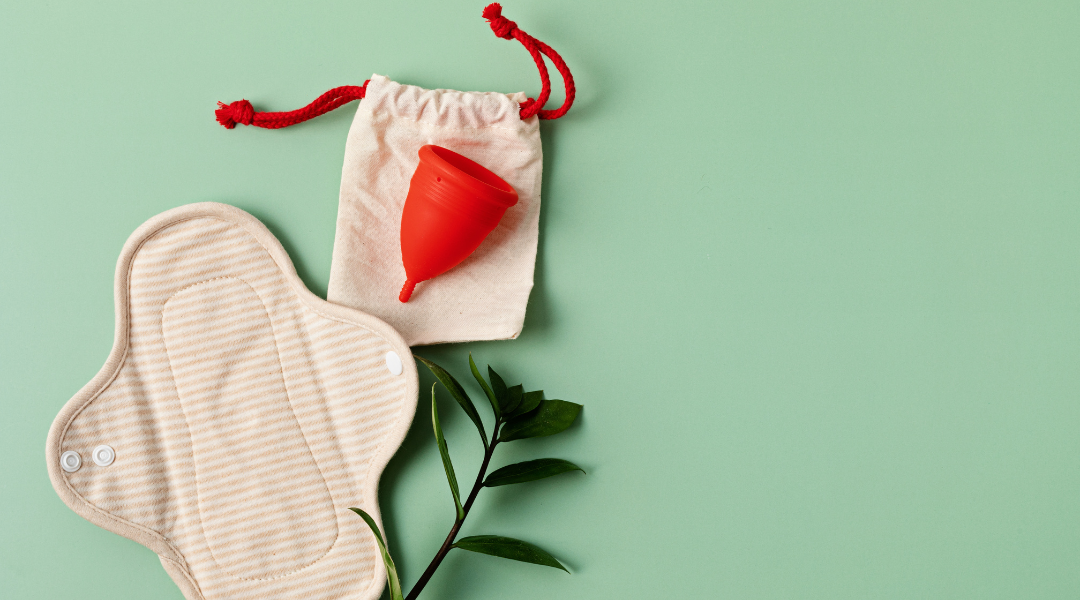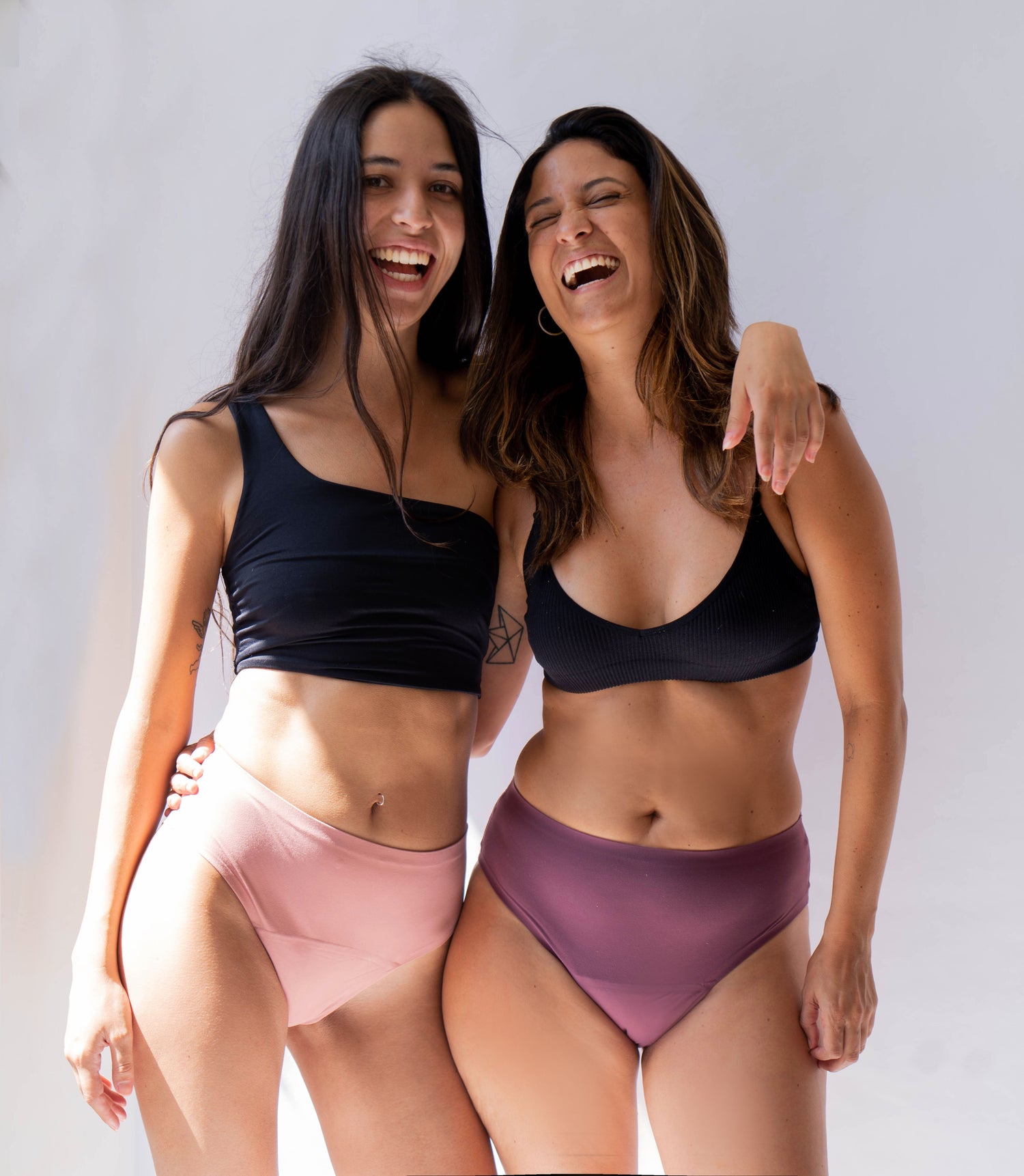Periods are expensive, and with an average of 480 periods in your lifetime between the ages of 12 and 52, it doesn’t get cheaper. Money Saving Experts predict that menstruators (who don't have kids) will use about 10,500 sanitary products in their lifetime, and Huffington Post found that British women spend as much as £18,450 on their periods over the course of their lifetime. Furthermore, a recent survey by Plan International showed that one in 10 aged 14 to 21 in the UK said they could not afford to buy towels or tampons.
As the cost-of-living increases, it has become more important, for lots of us, to make cuts where possible. Of course, it is not often possible to eliminate the use of period products altogether, so how do you reduce the cost? Well, it starts with simple swaps. Keep reading to find out the easiest ways to save money on period products.
1. Check If You’re Eligible for Free Period Products
First things first, see if you’re eligible for free period products. The UK period product scheme ensures that all learners in schools and 16 to 19 organisations* in England should be able to access period products if they need them. It’s even better news in Scotland, where councils and schools must provide sanitary pads and tampons for free to anyone who needs them under the new Period Products Act.
Government schemes aside, lots of universities, workplaces, gyms and venues across the UK and elsewhere have committed to providing free sanitary products. Although not commonplace, it isn’t unusual to find free period care in a public toilet, or to have visible information that tells you where to get them (i.e. from a receptionist).
Last but certainly not least, community-led food banks and period poverty charities support people who are struggling to afford period products.
There are various local initiatives around the world to make period products more available. So, depending on where in the world you live, there might be an initiative you could benefit from - ask around and check out your options.
* Those aged 19 or over are eligible for support if they are continuing on a study programme they began aged 16 to 18 (‘19+ continuers’), or have an education, health and care plan.
2. Switch to a Menstrual Cup
A menstrual cup is a reusable funnel-shaped cup, made of medical-grade rubber or silicone, that is designed to be inserted into the vagina to “catch” and collect menstrual blood. How long a menstrual cup lasts varies, but if you choose a high-quality menstrual cup such as Ruby Cup it will last you up to ten years when stored correctly and cleaned and sanitised between each use. It doesn’t require difficult maths to know that this is a huge saving, compared to buying tampons and pads each month.
Menstrual cups also hold more than a regular tampon (you get roughly 8 hours of leak-free protection), and are better for the environment. Alongside this, menstrual cups tend to be more comfortable, in part because there are fewer cramps and no vaginal dryness, and less messy than pads and tampons. It’s a win-win to make the switch.
And even more so when choosing Ruby Cup. As we donate a cup for every Ruby Cup purchase, you are joining the fight against period poverty the moment you become a Ruby Cup user.

3. Use Reusable Period Pants and Pads
Ditch the expensive single-use pads and invest in reusable period pants instead. It’s normal to be a little sceptical at first, but this ultra-absorbent underwear promises a leak-free, comfortable, and cheaper period — and one pair should last for years, as long as you treat them right.

If you’d still prefer to use a pad, reusable period pads are another cost-effective alternative. According to Cheeky Wipes, the average cost per use of a reusable pad is around 3p per use, compared to 12p per use on disposable pads. Just wear, bleed, wash and reuse, with the promise of a no chafe, peel-free, and more affordable experience.
4. Track Your Period
If you know when your period will arrive, you can make sure you account for it in your budget for the week/month — no nasty surprises, or more money leaving your account than expected.
You can use an app like Flo or Clue, which helps you keep on top of when you are due, as well as understand your cycle and symptoms better. Or, you can track your period in your diary, planner or bullet journal. You should monitor your menstruating days and the heaviness of flow to know when you’re due, and what and how many products you typically need (to account for them in your budget).
(Pro tip: Or just use zero waste options like menstrual cups, menstrual discs, reusable pads or period panties!)

5. Take Advantage of Offers
The ideal period product for you is a personal choice. If you’re sticking to single-use period products, try to take advantage of offers. Supermarkets and high-street retailers often run promotions so that you can save on your period care — you just need to be patient, and keep an eye out for them.
Our advice is that, if you see period products for cheaper than normal, stock up in bulk to save money in the long-run. This is an easier commitment if you’re loyal to a particular brand or product.
6. Switch to Own-Brand Products
Although the big brands have a bigger reputation, these come with a bigger price tag. Own-brand products tend to be cheaper, but are just as effective. Research by Which? shows that Asda, Morrisons, Lidl and Aldi have the cheapest own-brand tampons and pads in the UK.
Please be mindful that some period products contain potentially harmful chemicals, bleach, plastic and more. Read more on the potential health benefits of switching away from single-use in our article “Should you worry about the side-effects of tampons?”.
And there you have it! Our top six tips for saving money on period products. It’s not always simple to make cuts, but cost-effective switches can help you to save cash in hard times. If you’re struggling to get access to safe and hygienic menstrual products, don’t hesitate to get in contact with your local council, food bank, or a period enterprise that provides free products in your area.
Ruby Cup thanks for the article written by Holly for Cheeky Wipes, specialists in simple and cost-effective reusables since 2007. Learn more and shop their range of reusable period products, wipes and cloth nappies on their website.
For more on period costs check out our articles “How much does a period cost?” and “Product vs. period cost: How expensive is menstruation?”

 Your Account
Einloggen
Your Account
Einloggen
 Basket
Basket

